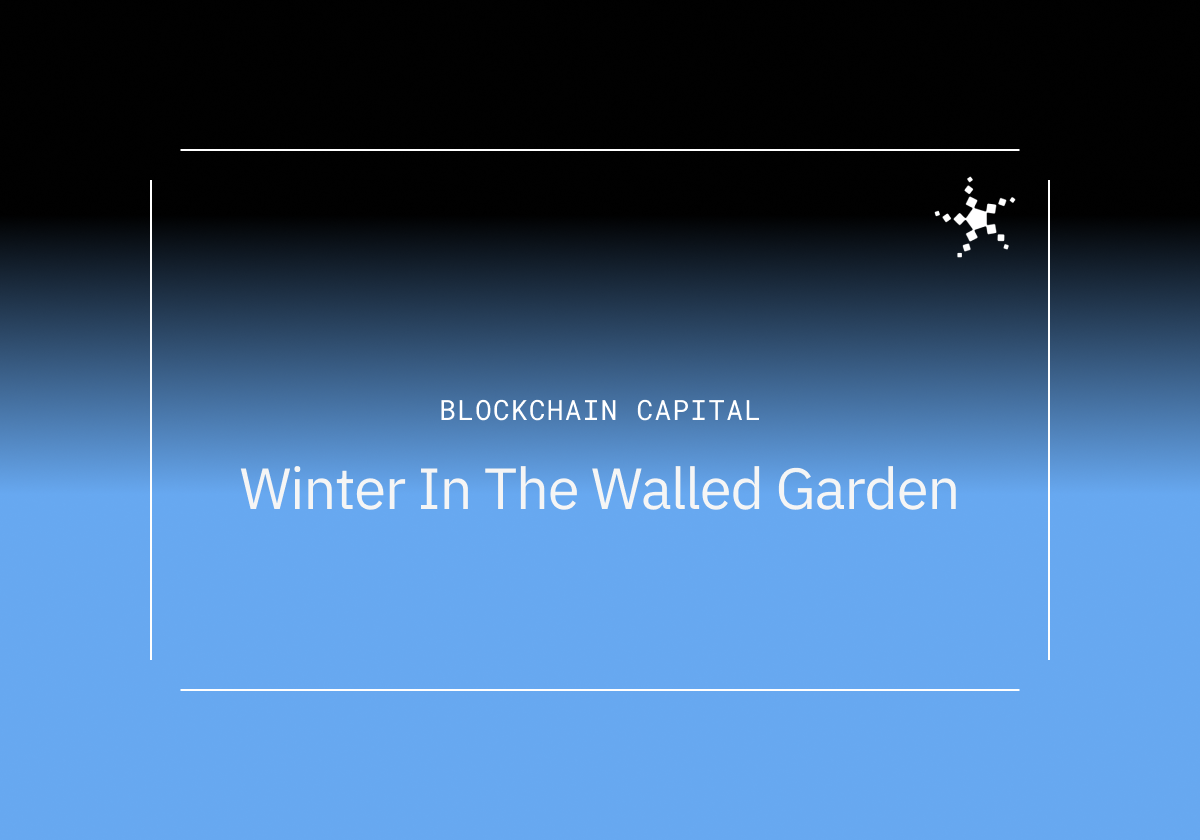
Winter in the Walled Garden
In The Selfish Giant, Oscar Wilde’s lonely giant walls off his garden to keep local children out, resentful that they found opportunity in what he believed was his alone. But he mistakes this exclusivity for permanence and ends up ensuring the garden never blooms.
That instinct to build barriers — protecting what exists and excluding what’s next — captures the banking lobby’s recent push to wall-off stablecoins. By advocating for expansive interpretations of “interest,” “yield,” and “solely,” the banking lobby rejects open competition, forgets the recent U.S. Supreme Court decision, Loper Bright, and fights to keep power in a game it can no longer win by merit.
Fractional-reserve systems mean banks fund loans with your deposits, typically holding only 3-12% as reserves. Functionally, banks operate at a roughly 8-12x leverage (see chart 3.1), meaning that for every $10 in deposits, banks hold about $0.30 to $1.20 in actual reserves.
Banks make money on the spread between what they earn on loans and what they pay you for deposits — the net interest margin. Your cash, usually their lowest-cost funding, is lent out at 3–4%, while you earn close to zero.
You accept the counterparty risk while the bank keeps the spread. If their loans sour, your deposits are just a claim on a leveraged balance sheet. You’re insured to a point, but not protected from systemic losses at scale.
Stablecoins break that math by giving consumers and businesses a way to hold digital dollars that settle instantly, 24/7, backed one-to-one by cash-equivalents and T-bills.
In other words, you own the reserve asset directly rather than an IOU from a highly leveraged financial institution incentivized to shift risk onto its depositors.
If dollars route to the lowest‑cost and most efficient rail, the net interest margin flywheel slows. But I know what you’re thinking: bank deposits are safer because they’re FDIC-insured.
While true, the reserves required to back regulated stablecoins are the same instruments sitting in government money market funds: short-term Treasuries and overnight repos. And FDIC insurance doesn’t really eliminate risk; it socializes it (and at substantial cost to financial infrastructure).1
Stablecoins are not without risk — technological, regulatory, or market — but the GENIUS Act’s purpose is to set the guardrails that make those risks transparent and manageable.
After 2008, even the Federal Reserve’s own analysis concluded government money market funds, the same instruments backing regulated stablecoins, displayed one of the strongest records of stability among cash-proxy vehicles.
In fact, the Fed found these assets to be more stable than insured bank deposits once systemic leverage is stripped away, undermining the claim that stablecoins pose greater risk to consumers.
In July (yes, just 90 days ago), Congress passed into law the GENIUS Act, the first federal framework for payment stablecoins. The law formally recognized the massive consumer and systemic benefits of dollar-backed digital assets while codifying practices most leading issuers already follow: providing consumers and institutions access to fully reserved, natively digital dollars.
However, under heavy influence from the bank lobby, the bill also took pains to bar issuers from paying “any form of interest or yield… solely in connection with holding, using, or retaining a payment stablecoin.” A reminder that when incumbents can’t compete on merit, they compete on rulemaking.
On Nov. 4, 2025, the American Banking Association (ABA) and several state associations carried this baton further. In comments submitted through the advance notice of proposed rulemaking (ANPR), the ABA urged the U.S. Treasury to dramatically broaden how it interprets the GENIUS Act’s ban on paying interest.
They proposed stretching the definitions well beyond the statute’s plain language in three key ways:
- Define “interest or yield” broadly (any economic benefit, not just cash);
- Treat rewards or incentives distributed through third-party or arm’s-length partners as if they were direct issuer payments, and;
- Interpret “solely” so expansively that even trivial conditions such as rewards linked to usage, holding period, or platform activity would trigger prohibition.
The ABA calls this protecting deposits and community lending. But like Wilde’s Giant, they wall off the garden only to preserve what’s theirs. In doing so, they propagate stagnation.
The practical effect of the ABA's position is to protect banks’ low-cost funding base (again, your money) and keep deposits within a system where money must pass through leveraged intermediaries instead of fully reserved options.
Make no mistake: this is textbook ring-fencing. The ABA seeks to stretch “interest,” “yield," and “solely” definitions so expansively as to classify innovation as non-compliance — all while framed as consumer protection. It’s not about defending consumer safety, but rather continuing consumer captivity.
And let’s be clear, their bid to treat far-afield third-party rewards as “issuer interest" would face significant scrutiny under legal review. In June of 2024, with its decision in Loper Bright, the Supreme Court overturned a judicial review concept known as “Chevron Deference” in which federal courts would largely defer to federal agency “expertise” when reviewing regulatory rulemaking.
Now, under Loper Bright, federal courts no longer grant such broad deference to regulatory agency interpretations. Instead, courts must rely on what Congress actually intended with its legislation by looking directly at the language of the statutes. Rulemaking by the Treasury that stretches the plain meaning of the GENIUS Act language, as the ABA proposes, would risk significant judicial scrutiny.
The Treasury's mandate is straightforward: implement Congress’s narrow directive on issuer‑paid interest and regulate against coordinated evasion.2
The real question is whether policy will protect competition or entrench incumbency. By excluding direct issuer yield, policy can let open, programmable dollar rails compete on speed, cost, and utility.
This balance preserves oversight, honors the law, and keeps innovation from stalling behind a walled garden.
1 See, Reform of Deposit Insurance, A Report to the FDIC discussing massive costs to financial institutions in premiums and deposit gathering during business cycle downturns. See also, Harvard Law School Forum on Corporate Governance, Why Have Uninsured Depositors Become De Facto Insured? and Successfully Managing Systemic Risk: Deposit Insurance in a Turbulent World discussing the impact and costs of moral hazard risk of deposit insurance.
2 Many of the leading stablecoin issuers from Coinbase to Circle have responded to the U.S. Treasury’s request for public comment on this historic law’s implementation.
Blockchain Capital may be an investor in one or more of the protocols or companies mentioned above. The views expressed in each blog post may be the personal views of each author and do not necessarily reflect the views of Blockchain Capital and its affiliates. Neither Blockchain Capital nor the author guarantees the accuracy, adequacy or completeness of information provided in each blog post. No representation or warranty, express or implied, is made or given by or on behalf of Blockchain Capital, the author or any other person as to the accuracy and completeness or fairness of the information contained in any blog post and no responsibility or liability is accepted for any such information. Nothing contained in each blog post constitutes investment, regulatory, legal, compliance or tax or other advice nor is it to be relied on in making an investment decision. Blog posts should not be viewed as current or past recommendations or solicitations of an offer to buy or sell any securities or to adopt any investment strategy. The blog posts may contain projections or other forward-looking statements, which are based on beliefs, assumptions and expectations that may change as a result of many possible events or factors. If a change occurs, actual results may vary materially from those expressed in the forward-looking statements. All forward-looking statements speak only as of the date such statements are made, and neither Blockchain Capital nor each author assumes any duty to update such statements except as required by law. To the extent that any documents, presentations or other materials produced, published or otherwise distributed by Blockchain Capital are referenced in any blog post, such materials should be read with careful attention to any disclaimers provided therein.
No Results Found.







.jpg)



.png)
.png)

.png)